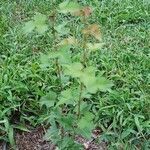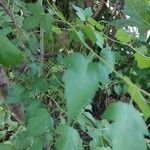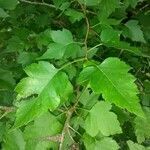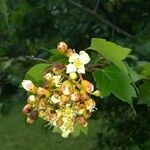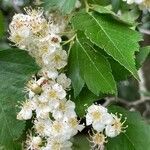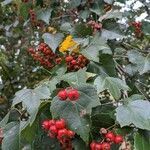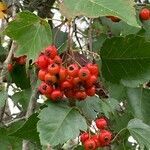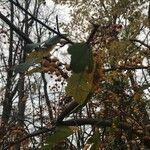Tree to 12 m; lvs mostly ovate or cordate, acuminate, dark green and glossy above, glabrous or nearly so, 2–6 × 2–5 cm, coarsely and irregularly serrate and with 1–4 pairs of lateral lobes, the basal pair of lobes the largest, the others very shallow, the veins running to the sinuses as well as to the points of the lobes; petiole 1–2 cm, eglandular; fls 1–1.3 cm wide, in compound glabrous cymes; sep short-deltoid, acute or apiculate, tending to fall from the fr; fr 4–5 mm thick, bright scarlet; nutlets 3–5. Both native and as an escape from cult.; Pa. to n. Fla., w. to Ill. and Mo.
A deciduous tree. It grows 6-12 m tall. It is very thorny. The thorns are long and sharp. The crown is round and it is densely branched. The bark is red-brown to grey-brown and thin and scaly. The leaves are broadly oval and 3-8 cm long and have 3-5 sharply toothed lobes. They are glossy green. The flowers are white. They have a scent. They occur in clusters. The fruit are small and shiny. They are orange-red berries. They are 4-6 mm across.
